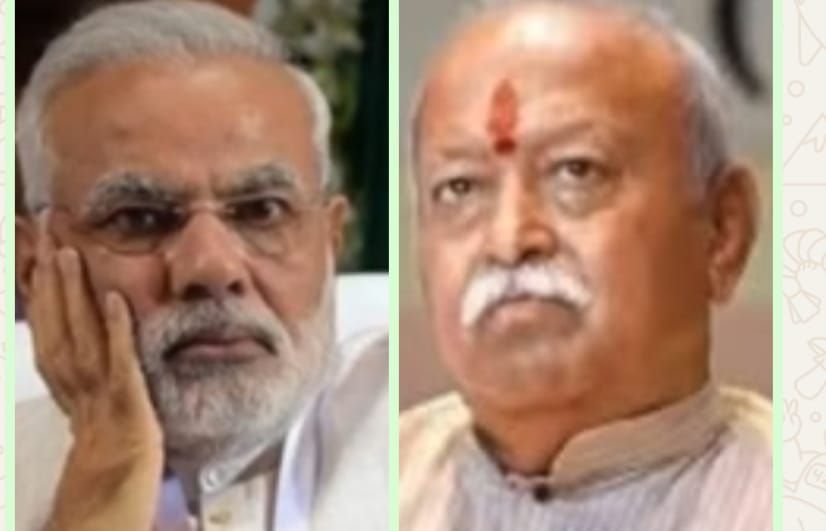NEW DELHI: Despite recurring speculation over leadership transition within the Bhartiya Janata Party (BJP) and its ideological parent, the Rastriya Swayamsevak Sangh (RSS), top functionaries of the Sangh Parivar maintain there is no immediate possibility of destabilizing Prime Minister Narendra Modi — especially even as the RSS marks its centenary year, which runs until 2026.
Sources familiar with internal RSS deliberations confirm that while RSS chief Mohan Bhagwat’s recent speech in Nagpur — where he spoke about “paving the way for others” — has sparked interpretations regarding generational change, these remarks are being seen more as rhetorical posturing rather than a signal of concrete intent to engineer a leadership transition.
A senior RSS insider posed a pointed question: “If Bhagwat genuinely wants Modi to step aside, why not seek a closed-door, one-on-one meeting with him?” The answer lies in structural realities. Narendra Modi is no longer simply a Swayamsevak answerable within an organisational hierarchy. As India’s most popular political leader with an independent mandate, he stands apart from the traditional RSS command chain.
Another complication is the absence of effective interlocutors. Since Modi’s rise in 2014, several key RSS figures who once served as bridges between the Sangh and BJP have either retired or have grown closer to Modi himself. Their loyalties have shifted, making it nearly impossible to convey sensitive suggestions — such as stepping down — through trusted channels.
Furthermore, cadre sentiment within the RSS remains firmly in Modi’s favour. From Ram Mandir to Article 370 abrogation and moves towards a Uniform Civil Code, Modi is widely credited with fulfilling the Sangh’s long-pending ideological goals.
The RSS sources also point out how Modi has made the RSS economically viable as he got it around Rs 2,00 crore to build Keshav Kunj, a second headquarter of the RSS in Delhi besides Nagpur. Many in the RSS have become rich, thanks to the policies of Modi, that is not hidden from the RSS cadres.
For Bhagwat or other RSS leaders to openly challenge Modi’s position would risk alienating a substantial portion of the organisation’s grassroot Swayamsevak’s, many of whom see Modi as the Sangh’s most successful political product to date.
From a purely political standpoint, RSS insiders acknowledge that raising the leadership question now could also inadvertently benefit the opposition, especially in election-bound Bihar. Senior RSS sources suggest that any overt attempt to pressure Modi could provoke unpredictable counter-moves.
Modi might nominate his own successor — names like Amit Shah or Nirmala Sitharaman are often mentioned — to ensure continuity and safeguard his political legacy. In an extreme scenario, say insiders, the Modi-Shah duo could even dissolve the Lok Sabha and call for mid-term elections, effectively challenging the RSS to test its electoral influence directly — a prospect the Sangh would prefer to avoid.
For now, RSS’s priority remains maintaining organisational stability and managing its public image ahead of its 100th anniversary. A high-stakes internal rift or leadership contest within the BJP would overshadow planned centenary milestone events in 2026 — a situation the Sangh leadership, including Bhagwat, are acutely aware of.
Independent voices within the RSS thinktank also observe that while Bhagwat may muse publicly about generational change and second-line leadership, these are seen more as strategic positioning than executable plans. Until the centenary year concludes, the RSS, by its own admission, stands on its weakest wicket ever when it comes to influencing or removing Narendra Modi.
[Writer is Senior Journalist and Political Commentator]






